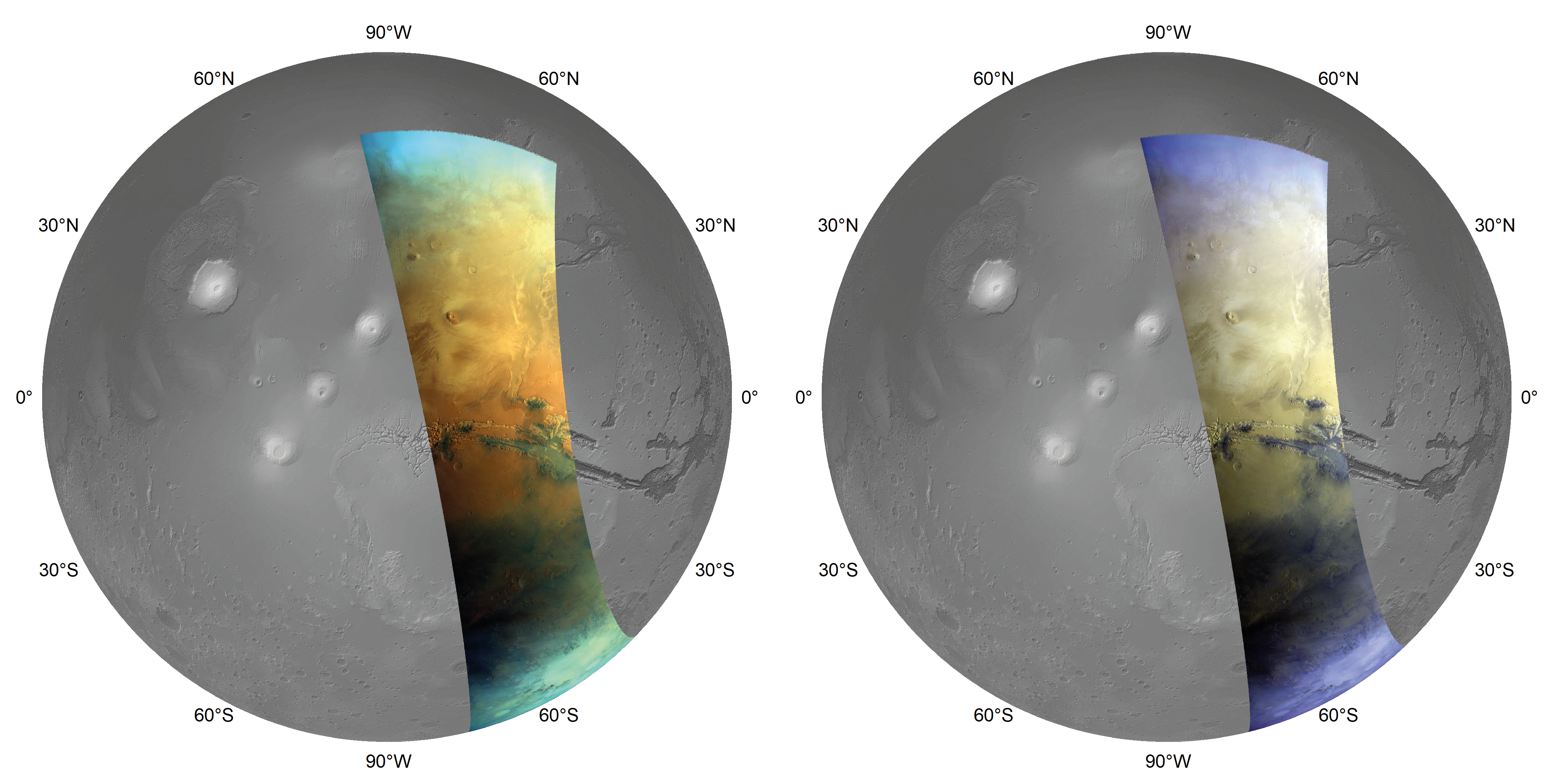See Mars like never before in this amazing new photo from a 20-year-old probe
Celebrate 20 years of the Mars Express spacecraft with this incredible view of the Red Planet.

A stunning new image shows Mars in an entirely new light, revealing intricate details of the Martian surface.
The image was released to commemorate 20 years of the European Space Agency's (ESA) Mars Express spacecraft. Since the Mars Express entered orbit around Mars on Christmas Day 2003, the orbiter has been snapping images of the Martian surface from an altitude of around 186 miles (300 kilometers), the closest the spacecraft comes to the Red Planet. This results in images that are around 31 miles (50 kilometers) wide.
This new mosaic was created using a slightly different method, however, using data collected by the spacecraft's High-Resolution Stereo Camera (HRSC). The mosaic was built from 90 images the HRSC snapped while its ride was higher above Mars in its elliptical orbit. From altitudes between 2,500 miles (4,000 kilometers) to 31,000 miles (50,000 kilometers) over the Martian surface, HRSC can capture images that are around 1,550 miles (2,500 kilometers) wide. While these high-altitude images are typically taken to help observe weather patterns over Mars, they can also provide a full global view that reveals unprecedented details of the planet when united.
Related: Mars: Everything you need to know about the Red Planet
Despite its infamous moniker, the new mosaic image of the Red Planet shows it in a multitude of colors, providing a far richer color view of the planet than ever before.
This effect is far more than just aesthetic, however, as each hue offers planetary scientists information about the surface composition of the planet.
Mars' infamous reddish coloration is the result of oxidized iron, but this image also shows dark and even blue regions. These are the result of volcanic activity depositing grey-black basaltic sands on the Martian surface, creating wide-spread dark layers of sand. As the winds of Mars move these dark sands, they pile up, creating large sand dunes and dune fields when caught in craters left by asteroid impacts.
Get the Space.com Newsletter
Breaking space news, the latest updates on rocket launches, skywatching events and more!

The mosaic also shows lighter and even white regions across the surface of the Red Planet, which are the result of rocks being altered and weathered by water far back in the ancient history of the now arid planet. Particularly bright are water-weathered clay and sulfate minerals, the presence of which was confirmed by another instrument aboard the Mars Express, the Omega Spectrometer, in August 2022.
Sulfate minerals are visible in the image within a Mars canyon system called Valles Marineris that stretches across the Martian surface east of the Tharsis region for over 2,500 miles (4,000 kilometers). These poke out as white specks and smears through a darker covering of basaltic sands. Sulfate deposits like this indicate they water-weathering in more acidic conditions than would have been found in regions clay deposits, implying regions of Mars that even in its watery past would have been less hospitable to life.
The mosaic is a striking example of the tremendous impact that the Mars Express has had on science since it first entered orbit around the Red Planet exactly two decades ago this year.
This is even more striking when considering that the ESA mission was initially only set to operate for one Martian year, equivalent to 687 Earth days. The lifetime of the Mars Express mission has been extended to last until at least 2026, meaning that the HRSC camera has plenty of time to deliver more stunning images of the planet.
Join our Space Forums to keep talking space on the latest missions, night sky and more! And if you have a news tip, correction or comment, let us know at: community@space.com.

Robert Lea is a science journalist in the U.K. whose articles have been published in Physics World, New Scientist, Astronomy Magazine, All About Space, Newsweek and ZME Science. He also writes about science communication for Elsevier and the European Journal of Physics. Rob holds a bachelor of science degree in physics and astronomy from the U.K.’s Open University. Follow him on Twitter @sciencef1rst.









